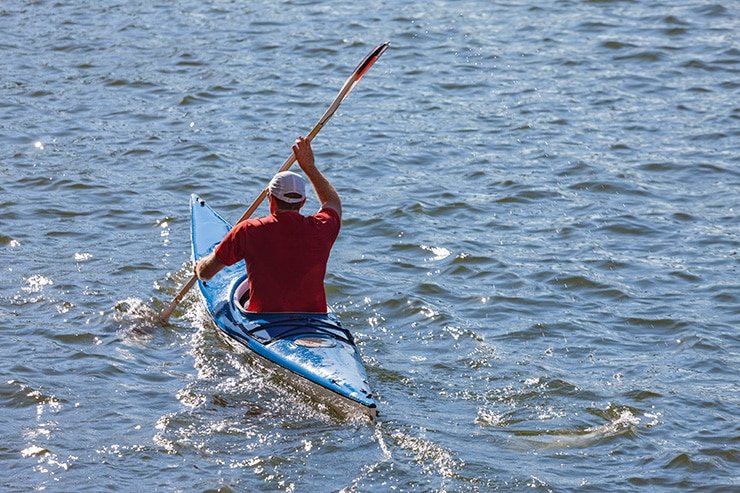Understanding the average kayak speed and how that helps you plan trips is an essential part of any kayaker’s knowledge base. Your overall kayak speed is subject to a few factors that we’ll explain in detail.
The average kayak speed hovers around 2 – 3 miles per hour, equivalent to about 2.6 knots. Kayak speed is subject to lots of variation – in the right conditions, you can go surprisingly fast, but in more challenging conditions, you’ll slow to a crawl.
Covering all the factors that impact kayak speed requires us to go into some detail.
Key Takeaways
- The average kayak speed is around 2-3 miles per hour, but it can vary depending on different factors.
- Kayaking is a physical activity that requires good technique and stamina to maintain a high speed.
- Kayaks have different shapes and sizes that affect their speed. Generally, longer and narrower kayaks are faster than shorter and wider ones.
- Kayaks have a theoretical maximum speed based on their hull length at the waterline level. However, this speed is hard to achieve and sustain in normal conditions.
- Paddling with the wind or current can boost the speed while paddling against them can slow it down.
The Average Kayak Speed Is 3 Mph
We know the average speed is around 3 miles per hour, but it’s more complex than a car or measuring average walking speed. Cars can maintain speed thanks to the power of combustion engines, and you can only walk so fast.
Kayak speed is a little different. The weather, the ability of the kayaker, fitness level, and even the type of kayak all affect performance.
As a kayaker, your experience also has an impact on your ability to maintain a good pace.
READ NEXT: How far can you kayak in a day?
How Fast Does a Beginner Go?
A beginner kayaker will be slower than the average of 3 miles per hour. They are still learning the basics of paddling speed, so their average speed will be low.
You should expect to make quick improvements but may find that it takes a while to build up a solid pace and hit the 3 miles per hour average.
Beginner kayakers also tend to use recreational kayaks, which are not built purely for maximizing speed. They’re designed more for versatility and being able to control and turn much more easily.
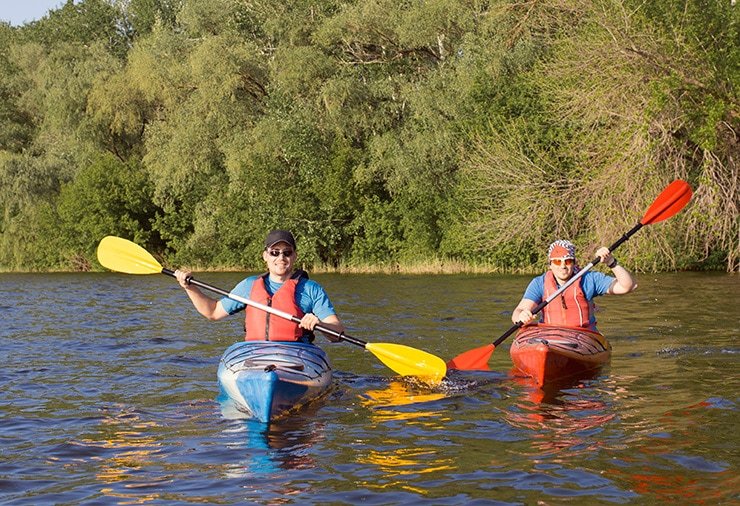
Factors That Affect Kayaking Speed
The factors below all contribute to your average kayak speed – some of these factors are in your control, such as experience (how much you practice) and fitness (developing stamina or strength in the gym, for example).
There are other factors outside your control, such as the weather and water conditions – you can plan around these and get accurate information, but they are always subject to change.
Kayaker’s Experience
Your experience reflects the number of hours you have in a kayak – a more experienced kayaker will have a better paddling technique and will be more confident in their recovery skills. They can push themselves a little more because of this.
Obviously, a more experienced kayaker will have a higher kayaking speed than a beginner. Experienced kayakers will likely have navigational skills or know their routes better – which allows them to focus more on maintaining a higher average speed.
So, if you’re a beginner kayaker and you see someone blitzing past you, then don’t be discouraged.
Fitness Level
Kayaking is a physical activity, so the fitter you are, the more efficient you’ll be. Many competitive kayakers spend huge amounts of time doing specialized exercises to develop strength and stamina.
Your overall fitness plays a vital role in determining your average kayak speed. Over time, your endurance and technique will improve, which translates into more miles per hour on the water.
Water Conditions
Conditions on the water can also positively or negatively impact your kayak speed.
If you’re on the ocean, incoming and outgoing tides can either boost you forward or cause you to grind to a halt, even if you’re paddling at a breakneck pace. It’s always advised to try and plan a trip around the tides if you’re going to be doing any ocean kayaking.
River currents can also impact your average speed. Strong river currents can push you along much faster; whitewater kayaks are designed around using river currents to gain momentum.
Conditions on the water are also linked to what happens with the weather.
Paddling on flat water, such as a calm lake, will be fairly steady. The only thing that can impact your kayak speed here is the wind.
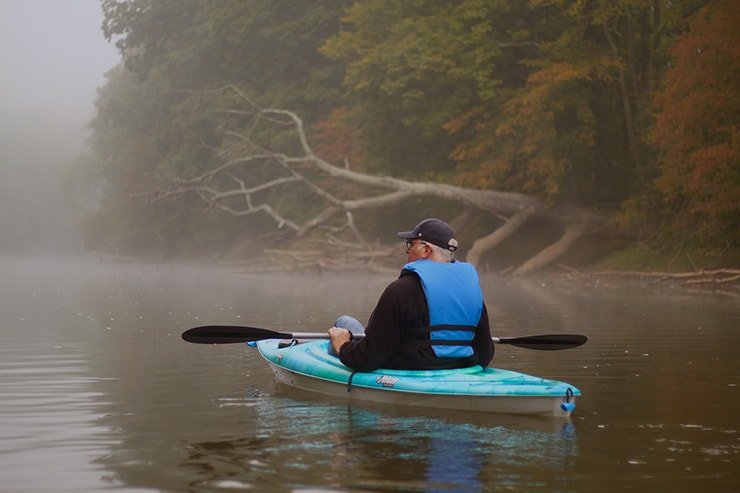
Weather Conditions
When talking about the weather factor that affects kayak speed the most, it’s hard to overstate the impact of wind.
Heavy rains can slow you down, but strong winds from the front or sides can slow down even the fittest and most experienced kayakers. However, winds from the back can push you along and increase your average kayak speed.
It’s very easy to hit an average kayak speed of 5 miles per hour or more when paddling with strong winds, but paddling against strong winds might slow you to 1-2 miles per hour. While it can be easy to say “just paddle with the wind all the time” this doesn’t always happen in reality.
Paddling on flat water, like a calm lake, will be reasonably steady. The only thing that can impact your kayak speed here is the wind.
Kayak Weight, Length, and Type
Your kayak’s weight, length, and type all have an effect on your average kayak speed. For example, sea kayaks tend to be longer and narrower than recreational kayaks, whereas fishing kayaks are built for stability and handling higher loads – which is the opposite of what you need for speed.
Generally speaking, a longer and narrower kayak will paddle faster than a shorter and wider kayak.
In terms of speed, it’s pretty safe to estimate that kayaks rank the following from fastest, to slowest:
- Touring kayaks
- Sea kayaks
- Recreational kayaks
- Whitewater kayaks
- Fishing kayaks
Another thing to bare in mind, especially if you take longer trips, is the overall weight you are carrying (this means your weight, plus any cargo).
A lighter kayak will take less energy and therefore over time will maintain a higher speed. Managing weight is a balancing act, you don’t want to weigh yourself down too much but at the same time – you need to pack properly for a kayak trip.
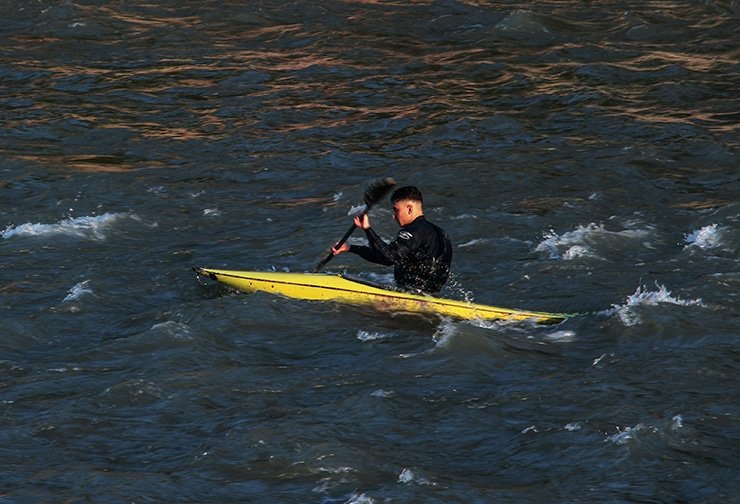
What Kind of Speeds Can Be Achieved on a Kayak?
All kayaks have something called a theoretical maximum speed, which is based on a calculation of the length of the kayak. You calculate the square root of the kayak hull length at the waterline level and multiply it by 1.34.
For a kayak with a 14 feet hull length at the waterline, this would look something like this:
3.74 (square root of 14) x 1.34 = 5.01 knots (converted to miles per hour this gives us 5.76)
The maximum hull speed calculator was developed around 100 years ago by a man named William Froude.
It’s important to note that it’s very possible for a kayak with strong winds or currents to the back to exceed its theoretical maximum speed. In normal conditions, it would be very hard even for experienced paddlers to maintain even close to the maximum speed over a prolonged period of time.
How To Get Faster Kayak Speeds
While there’s a lot to consider when looking at your kayak’s speed, there are a number of things you can do to improve your performance. If you’re a beginner, you’ll see improvements very quickly at first, but then it takes more practice and dedicated chunks of time.
There are always ways you can refine your technique and fitness, and some planning and preparation can go a long way.
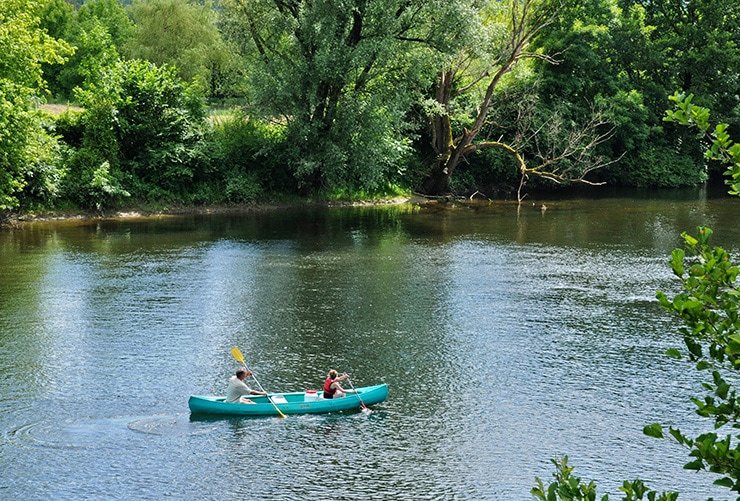
Improving Technique and Fitness
Every good kayaker attends a few kayaking lessons here and there or gets advice and mentorship from an experienced friend or family member. There’s an endless amount of ways you can get better paddling techniques.
For example, relaxing your fingers or engaging your larger muscles in our paddling strokes are all things that lessons can teach you, and not only will these handy nuggets of wisdom improve your average kayak speed – they also go a long way toward injury prevention.
Improving fitness also takes time. Racking up as many hours as you can on calm waterways is an excellent way to get better (you don’t want the wind to be doing the work that your muscles should be). However, this depends on what you have access to in your local area.
Plan Your Kayaking Trips
While taking into account information about weather and water conditions might seem like a lot of trouble, it doesn’t have to be. Modern technology has given us a range of useful kayaking apps that can give you up-to-date information on your local waterways and reasonably detailed weather forecasts.
This information is invaluable for planning routes and trips and getting the best possible time out of your kayaking hobby you can.
Conclusion
To conclude, the average kayak speed hovers around 3 miles per hour – but plenty of factors can affect this. Experienced kayakers will have higher speeds than beginners, and the type of kayak you use plus the conditions in your area can also have a large effect.
No matter where you are or what kayak you use, it’s possible to increase your overall speed if you’re willing to put in the hours.
We hope you’ve enjoyed reading this article, please let us know in the comments if you have any more tips for your fellow kayakers, and share this with any friends or family who might benefit.

